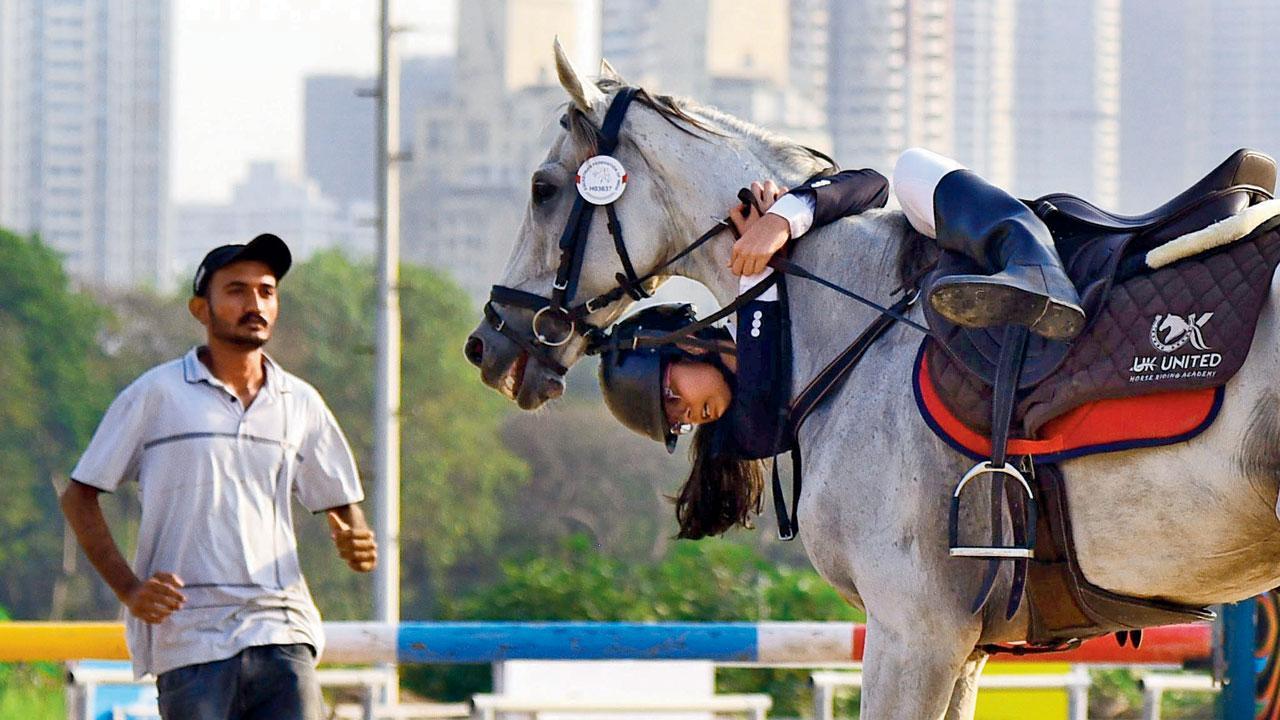Home / Mumbai / Mumbai News / Article /
Mumbai Diary: Monday Dossier
Updated On: 08 April, 2024 06:49 AM IST | Mumbai | Team mid-day
The city - sliced, diced and served with a dash of sauce
Listen to this article :

Pic/Shadab Khan
Neigh! this isn’t easy
An equestrian loses control of her horse during the Junior National Equestrian Competition at the Mahalaxmi Racecourse
The sparrow returns to Kalyan
 A team member sets up a feeder
A team member sets up a feeder
Read Next Story




